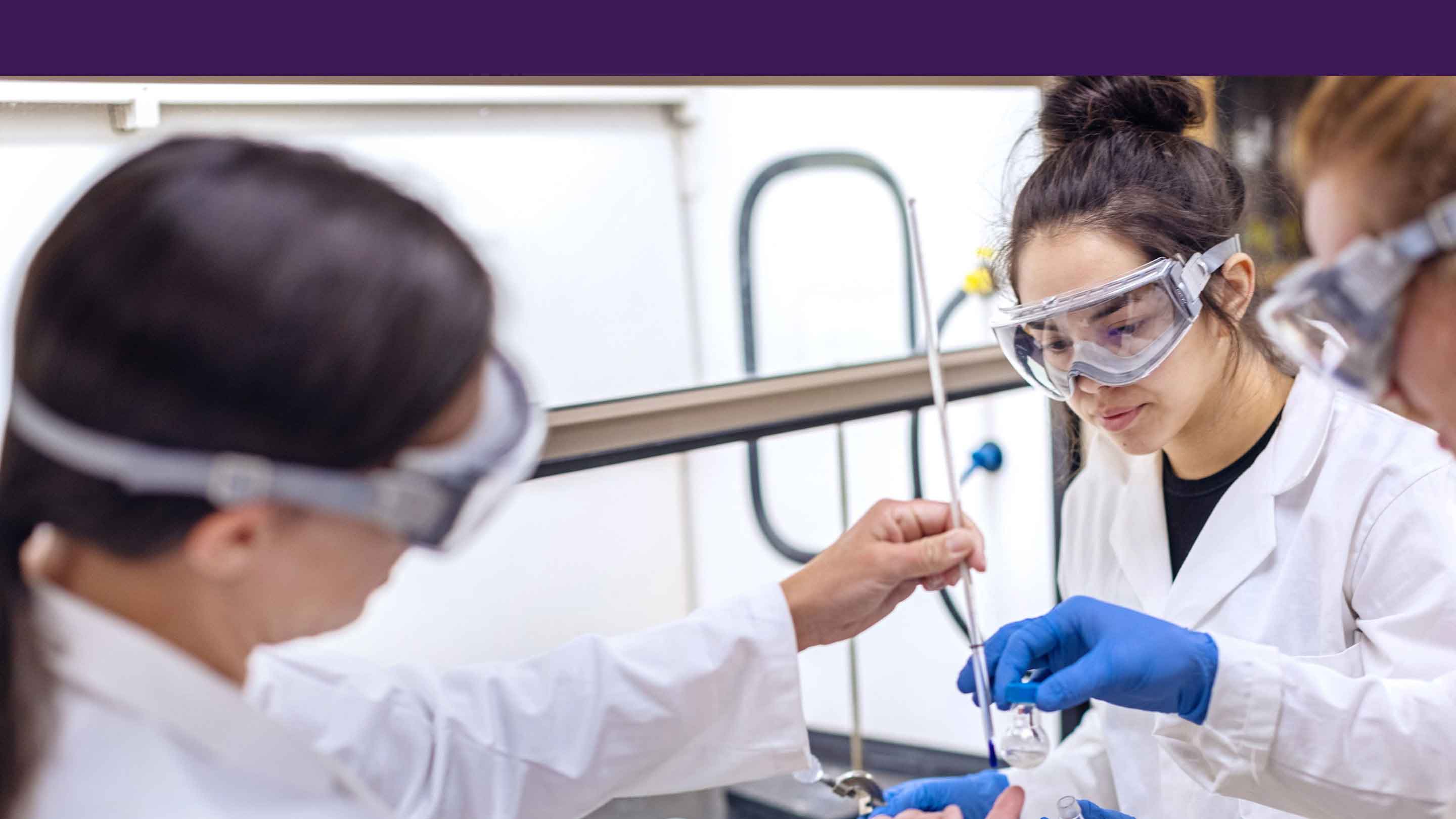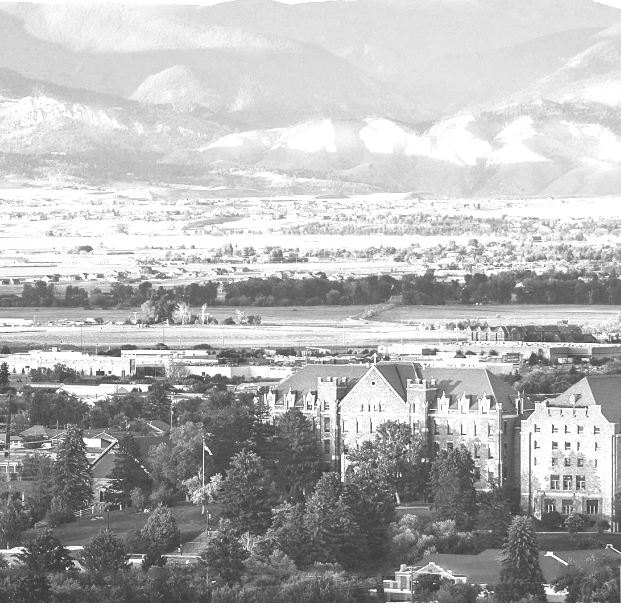Pharmacy is a career that requires a sound educational background in math and science as well as good communication and social skills. Pharmacy programs vary from college to college, but all pharmacy schools in the nation now only offer a Doctor of Pharmacy (Pharm. D.) degree. This type of program usually requires at least two years of pre-pharmacy undergraduate study and four years of professional education in the actual pharmacy program. Some pharmacy schools might require additional coursework prior to admission (examples on a separate page), which make it necessary to do three or four years of pre-pharmacy coursework. Most students from Montana apply to the University of Montana.

Pre-Pharmacy
Details
The Pre-Pharmacy Pathway, followed in conjunction with a major area of study at Carroll College, will prepare students to enter careers that will allow them to administer the safe, effective, and affordable use of medicines. Students will take courses from a variety of subjects that will encourage them to become critical thinkers, compassionate healthcare professionals, and advocates for healthy living.
- Pre-Professional

About the Program
Successful applicant profiles, which indicate the number of applications received, number of admitted students, demographic information, average GPA, and other information, are available on pharmacy school web sites. The profile for the University of Montana can be found by searching for Skaggs School of Pharmacy Successful Applicant Profile or by following this link.
Prerequisite Courses
Each pharmacy school requires the completion of 15-20 selected prerequisite courses in chemistry, biology, mathematics, physics, writing, communications and social sciences. The requirements at each school are unique, which means that students need to select their target pharmacy school early in their academic careers and plan their Carroll coursework carefully. Those Carroll students who complete the pre-pharmacy requirements in two or three years and who are successfully admitted to a college of pharmacy need not fulfill actual requirements for an academic major at Carroll. A list of the prerequisite courses can be found on each school’s web site. The Carroll courses that satisfy the UM pre-pharmacy requirements are included with this fact sheet. A typical class schedule for students applying to the UM pharmacy program (or a similar program) is also attached.
Professional Observation Experience
It is always a good idea to observe and visit with members of the professional community. Some schools require volunteer or paid experience serving a patient population in a medical or social field. UM requires 20 hours of such exposure in a medical or social field, preferably in a pharmacy, along with an evaluation of the applicant by the person who supervised his or her work. There are several pharmacies in the Helena area that welcome Carroll students as observers. Students may also observe in a hometown pharmacy during the summer. The following attributes of an experience are important:
- opportunity to demonstrate effective interpersonal communication,
- opportunity to provide a helping service for clients,
- regular supervision of the student and observation of the quality of service provided for clients or patients, and
- opportunity to demonstrate responsibility, sound judgment, maturity, and dependability.
Most of the pharmacy schools in the Northwest U.S. reported that a significant number of their students admitted in 2025 had completed three years of coursework or received a bachelor's degree. Some pharmacy schools require prior completion of a bachelor’s degree. In contrast, the Skaggs School of Pharmacy at the University of Montana reported that 50% of their fall 2025 admitted students had no prior degree.
Pre-pharmacy Two-year Plan for the University of Montana Skaggs School of Pharmacy1
The courses listed below in bold are required and must be completed before a student matriculate into the pharmacy program at the University of Montana.
| Fall Year One | Credits | Spring Year One | Credits |
|---|---|---|---|
| First Year Writing Seminar | 3 | General Chemistry II | 4 |
| General Chemistry I | 4 | Social Science Elective2 | 3 |
| Found. Cell and Molec. Bio. & Lab | 4 | Elementary Statistics | 3 |
| Calculus I | 3 | Basic Communication | 3 |
| Elective3 | 3-4 | ||
| Total credits | 14 | Total credits | 13-17 |
| Fall Year Two | Credits | Spring Year Two | Credits |
|---|---|---|---|
| Organic Chemistry I | 4 | Organic Chemistry II | 4 |
| Human Anat. and Phys. | 4 | Human Anat. and Phys. | 4 |
| Elective3 | 3-4 | Elective3 | 3-4 |
| Elective3 | 4 | Elective3 | 3-4 |
| Total credits | 15-16 | Total credits | 14-16 |
1Other pharmacy schools with very similar requirements are Idaho State, Minnesota, North Dakota State, South Dakota State, Utah and Wyoming. These schools may require some of the following additional classes for admission: Microbiology, Calculus II, Physics II, Microeconomics
2must be PSY 105 or SO 101
3Elective courses may be in any discipline. Carroll students who have matriculated into the University of Montana School of Pharmacy have reported that additional biology and health science courses, such as Microbiology have helped them to succeed in upper division pharmacy courses. UM encourages its students to have 12 – 18 elective credits before matriculation, as there is little room in the professional pharmacy curriculum for electives.
AP Courses
Occasionally students meet Carroll's requirements for one of the courses listed above through high school advanced placement (AP) credit. These courses are listed on the students Carroll College transcript. It is important to note that the following courses are not acceptable at most pharmacy schools, including UM, when awarded as AP credit: all chemistry, biology and physics courses, basic communication (and at some schools, college composition).
Academic performance in the required courses is important, and students should have a minimum GPA of 3.4 to have a good likelihood of admission. In 2025 the incoming students at UM had an average GPA of 3.51 in the required prerequisite courses and an average overall GPA of 3.50.
A standardized test such as the Graduate Record Examination (GRE) may also be required for admission to a minority of schools.
Yes! The Pharmacy Is Right for Me website includes information on different careers in pharmacy and has biographies from pharmacists.
The American Association of Colleges of Pharmacy (www.aacp.org) is an excellent resource on educational and career opportunities in pharmacy, as well as links to the pharmacy web pages for each school.
To quote the AACP website: "If you are looking for a challenging and rewarding career within the health professions, consider pharmacy. Be sure that your academic background provides a solid foundation for the pharmacy curriculum, and take the time to investigate the variety of pharmacy programs that are available to you."
Yes. Please contact Dr. Kyle Strode using the Ask a Pre-Pharmacy Professor form below:
Dr. Kyle Strode
Professor of Chemistry
Office: Fortin 217
